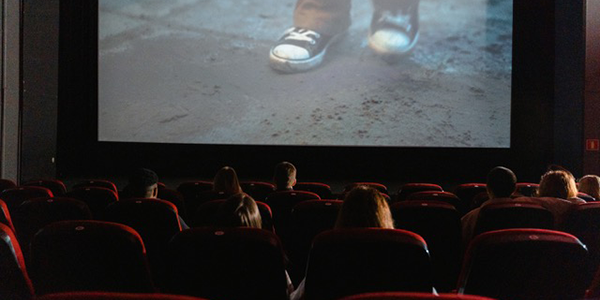 In the realm of cinematic storytelling, the marriage of visuals and audio is a fundamental aspect that can profoundly impact the audience’s experience. The introduction of Dolby Stereo in films like “Star Wars” (1977) marked a significant turning point in the history of the film industry, revolutionizing the way sound was captured, processed, and presented. This comprehensive article delves into the evolution of Dolby Stereo and surround sound technology, highlighting its impact on the cinematic landscape and its role in creating immersive and multidimensional audio experiences.
In the realm of cinematic storytelling, the marriage of visuals and audio is a fundamental aspect that can profoundly impact the audience’s experience. The introduction of Dolby Stereo in films like “Star Wars” (1977) marked a significant turning point in the history of the film industry, revolutionizing the way sound was captured, processed, and presented. This comprehensive article delves into the evolution of Dolby Stereo and surround sound technology, highlighting its impact on the cinematic landscape and its role in creating immersive and multidimensional audio experiences.
- The Emergence of Dolby Stereo: The year 1977 witnessed a cinematic phenomenon that would forever change the course of film sound: the release of “Star Wars.” Alongside its groundbreaking visual effects, the film also introduced audiences to Dolby Stereo, a cutting-edge sound system developed by Dolby Laboratories. Dolby Stereo marked a paradigm shift in audio technology, enabling filmmakers to create a more realistic and captivating auditory experience.
- The Advancements in Surround Sound Technology: 2.1 Dolby Surround: Following the success of Dolby Stereo, Dolby Laboratories continued to innovate, leading to the introduction of Dolby Surround in 1982. Dolby Surround expanded on the capabilities of its predecessor by incorporating a four-channel audio format, allowing sound engineers to position audio effects more precisely within the theater space. This advancement greatly enhanced the sense of spatiality and immersion, enriching the overall cinematic experience.
- THX and Surround EX: In the pursuit of even greater audio fidelity, Lucasfilm’s THX division collaborated with Dolby Laboratories to develop the THX Surround EX system in 1995. This technology introduced an additional center surround channel, placing audiences in the midst of the action by expanding the sound field. Films such as “Jurassic Park” (1993) and “The Matrix” (1999) effectively utilized this format to intensify the on-screen narrative and captivate viewers.
-
 Dolby Digital and the Digital Revolution: 3.1 Dolby Digital 5.1: As digital cinema gained prominence in the late 1990s, Dolby Laboratories responded with the introduction of Dolby Digital 5.1 in 1992. This audio format provided filmmakers with six discrete channels of audio, including front left, center, and right channels, as well as surround left and right channels, and a low-frequency effects channel (LFE). Dolby Digital 5.1 became the industry standard for home theater systems, delivering immersive audio experiences that matched the quality found in commercial cinemas.
Dolby Digital and the Digital Revolution: 3.1 Dolby Digital 5.1: As digital cinema gained prominence in the late 1990s, Dolby Laboratories responded with the introduction of Dolby Digital 5.1 in 1992. This audio format provided filmmakers with six discrete channels of audio, including front left, center, and right channels, as well as surround left and right channels, and a low-frequency effects channel (LFE). Dolby Digital 5.1 became the industry standard for home theater systems, delivering immersive audio experiences that matched the quality found in commercial cinemas. - Dolby Atmos: Building upon its legacy of innovation, Dolby Laboratories unveiled Dolby Atmos in 2012, a revolutionary audio technology that further transformed the cinematic landscape. Dolby Atmos enables sound designers to position audio objects in a three-dimensional space, adding a sense of height and verticality to the sound field. By employing overhead speakers or specialized upward-firing speakers, Dolby Atmos transports audiences into the heart of the action, enveloping them with sound from all directions.
- The Impact on Filmmaking and Audience Experience: 4.1 Enhancing Storytelling and Immersion: The advancements in surround sound technology, particularly Dolby Stereo and its subsequent iterations, have significantly impacted the art of storytelling in cinema. Sound has evolved into a powerful narrative tool, enabling filmmakers to create a more engaging and realistic environment. From subtle ambient cues to bombastic action sequences, surround sound technology enhances emotional resonance, intensifies tension, and heightens the overall cinematic impact.
- Evoking Emotional Responses: Immersive audio experiences have the potential to evoke profound emotional responses from audiences. By leveraging multidimensional soundscapes, filmmakers can elicit a stronger emotional connection to the characters and events portrayed on screen. The ability to position sounds precisely within the theater space allows for a more nuanced portrayal of the story, capturing the subtle nuances of dialogue, music, and environmental effects. This heightened realism creates a more visceral and engaging experience for the viewers, drawing them deeper into the narrative and eliciting a range of emotions.
 Creating a Sense of Presence: Surround sound technology, particularly Dolby Atmos, has the remarkable ability to transport audiences into the cinematic world. By simulating sound coming from all directions, including overhead, the technology creates a sense of presence and immersion, blurring the boundaries between the physical space of the theater and the on-screen action. This heightened level of immersion enhances the suspension of disbelief and allows viewers to become active participants in the cinematic experience.
Creating a Sense of Presence: Surround sound technology, particularly Dolby Atmos, has the remarkable ability to transport audiences into the cinematic world. By simulating sound coming from all directions, including overhead, the technology creates a sense of presence and immersion, blurring the boundaries between the physical space of the theater and the on-screen action. This heightened level of immersion enhances the suspension of disbelief and allows viewers to become active participants in the cinematic experience.- Technical Challenges and Artistic Opportunities: While the adoption of advanced audio technologies brings immense creative opportunities, it also presents technical challenges for filmmakers and sound engineers. The precise calibration and integration of multiple audio channels require expertise and careful attention to detail. However, when executed effectively, these technologies empower filmmakers to craft intricate and layered soundscapes, adding depth and richness to their storytelling.
The introduction of Dolby Stereo and subsequent advancements in surround sound technology have revolutionized the film industry, transforming the way audiences experience cinema. From the awe-inspiring soundscapes of “Star Wars” to the immersive sound design of modern blockbusters, audio has become an integral part of storytelling, heightening emotions and creating a more realistic and engaging environment. Dolby Stereo, Dolby Surround, Dolby Digital, and Dolby Atmos have continuously pushed the boundaries of audio fidelity, enabling filmmakers to captivate and transport audiences like never before. As technology continues to evolve, we can expect even more innovative audio experiences that further enhance the magic of cinema.
Footnotes:
- The Official Dolby Laboratories website. (https://www.dolby.com/)
- Dolby Atmos – The Evolution of Cinema Sound. Dolby Laboratories.
- “Star Wars” (1977), directed by George Lucas. Lucasfilm Ltd.
- “Jurassic Park” (1993), directed by Steven Spielberg. Universal Pictures.
- “The Matrix” (1999), directed by The Wachowskis. Warner Bros. Pictures.
Note: This article provides an overview of Dolby Stereo and surround sound technology. For a more detailed understanding of specific technical aspects, it is recommended to refer to scholarly articles, industry publications, and official documentation provided by Dolby Laboratories.


